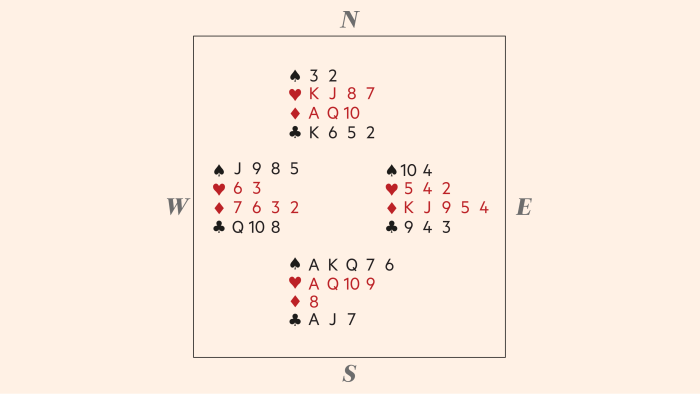Contract bridge: Angle of attack crucial to success in grand slam

Roula Khalaf, Editor of the FT, selects her favourite stories in this weekly newsletter.
There is more than one way to view a grand slam — and an alternative angle might make all the difference . . .
Bidding
Dealer: East
N/S Game
South’s opening bid is troublesome: 2NT with a singleton is wrong; a Strong Two should show a 6-card suit. Playing natural systems, 1S is best. 4NT was Roman Key-Card Blackwood; North’s 5H response showed A♦ and K♥; his 6C response indicated K♣.
Against a grand slam, providing you do not hold a singleton or a likely natural trick, the text-book lead is a trump. Here, unless the spade suit divides 3-3, it seems as if declarer is committed to a finesse (probably in clubs). Can you see a superior line?
It is often worth a look at how the hand might play the other way up — with your hand as dummy, and dummy as declarer: a dummy reversal. Here, that idea provides an excellent line. Declarer wins 3♥ lead in hand, cashes A♦, and ruffs 10♦ in hand. Crossing to K♥, Q♦ is ruffed in hand also.
South returns to dummy with K♣ to draw the last trump — on which, having none in hand, he can throw 7♣. Now, ♠AKQ are laid down and 6♠ ruffed with the final trump. Lastly, declarer comes to hand with A♣, and 7♠ is his 13th trick.
Comments